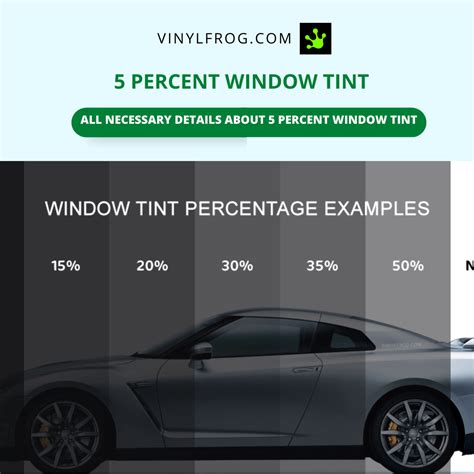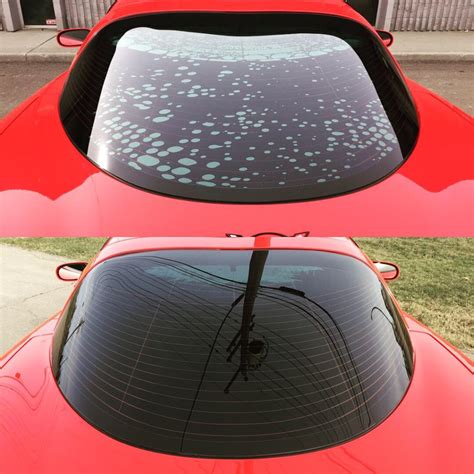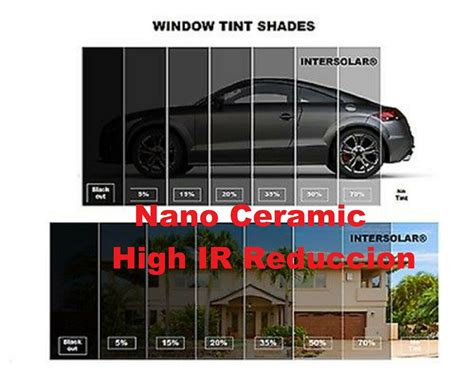When it comes to enhancing the comfort, safety, and aesthetic appeal of your vehicle, few aftermarket modifications can match the versatility and effectiveness of window tint. Window tint, also known as window film, is a thin laminate film that is applied to the inside of a vehicle's windshield and windows. This simple yet powerful upgrade can significantly impact your driving experience, offering benefits ranging from UV protection and glare reduction to enhanced privacy and security. In this article, we will delve into the world of window tint, exploring its types, benefits, installation process, and legal considerations to provide a comprehensive understanding of this valuable automotive accessory.
Key Points
- Window tint enhances comfort and safety by reducing glare and blocking UV rays.
- It offers privacy and security by making it difficult for outsiders to see into the vehicle.
- There are different types of window tint, including dyed, metallic, and ceramic films.
- Installation requires precision and the right tools to ensure a bubble-free and streak-free finish.
- Legal considerations vary by state and country, with specific regulations on the allowable tint darkness.
Types of Window Tint

The market offers a variety of window tint types, each with its unique characteristics, advantages, and price points. The primary types include dyed, metallic, and ceramic window films. Dyed window films are the most basic and affordable option, offering decent UV protection and glare reduction. However, they may not be as effective in blocking heat and can fade over time. Metallic window films are more advanced, providing better heat rejection and a more stylish appearance due to their metallic content. They can, however, interfere with radio and GPS signals in some cases. Ceramic window films represent the top tier, boasting excellent heat rejection, UV protection, and visibility without interfering with electronic signals. They are also more durable and resistant to fading.
Benefits of Window Tint
Beyond the aesthetic appeal, window tint offers a multitude of practical benefits. One of the most significant advantages is the reduction of ultraviolet (UV) rays, which can cause skin damage and fade vehicle interiors. Window tint also reduces glare from the sun, enhancing visibility and comfort during driving. Furthermore, it provides an additional layer of security by making it more difficult for potential thieves to see valuables inside the vehicle. The privacy aspect is also a major draw for many, as it prevents outsiders from viewing the interior of the vehicle. From a comfort perspective, window tint can significantly reduce the heat inside the vehicle, making the interior cooler and more comfortable, especially during hot summer months.
| Type of Window Tint | UV Protection | Heat Rejection | Signal Interference |
|---|---|---|---|
| Dyed | Good | Fair | No |
| Metallic | Excellent | Good | Yes |
| Ceramic | Excellent | Excellent | No |

Installation Process

The installation of window tint requires patience, precision, and the right set of tools. While it’s possible to DIY, professional installation is often recommended to avoid bubbles, streaks, and other imperfections. The process typically begins with cleaning the windows to ensure a dust-free and smooth surface. The window film is then cut to size, applied to the window using a mixture of water and soap, and smoothed out with a squeegee to remove excess water and air bubbles. The film is then trimmed around the edges and any excess is removed. Proper installation is crucial for the longevity and effectiveness of the window tint.
Legal Considerations
Before applying window tint, it’s essential to be aware of the legal regulations regarding the darkness of the tint. These laws vary significantly by state and country, with some allowing darker tints than others. The darkness of window tint is measured by its Visible Light Transmission (VLT) percentage, which indicates the amount of visible light that can pass through the film. For example, a 50% VLT means that 50% of visible light can pass through. Enforcement of these regulations can result in fines if the tint is found to be too dark, making it crucial for vehicle owners to comply with local laws when choosing and installing window tint.
What are the benefits of window tint for my vehicle?
+Window tint offers several benefits, including UV protection, glare reduction, enhanced privacy and security, and improved comfort by reducing heat inside the vehicle.
Can I install window tint myself?
+Yes, it's possible to install window tint yourself, but professional installation is often recommended to ensure a high-quality, bubble-free finish.
Are there laws regulating window tint?
+Yes, laws regarding the allowable darkness of window tint vary by state and country. It's essential to comply with these regulations to avoid fines.
In conclusion, window tint is a versatile and beneficial automotive accessory that can enhance the comfort, safety, and aesthetic appeal of your vehicle. With its various types, each offering unique advantages, and its straightforward yet precise installation process, window tint is an attractive option for many vehicle owners. However, it’s crucial to be aware of and comply with local regulations regarding window tint darkness to avoid legal issues. By understanding the types, benefits, and legal considerations of window tint, you can make an informed decision that suits your needs and preferences, ultimately enhancing your driving experience.
